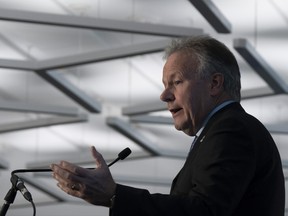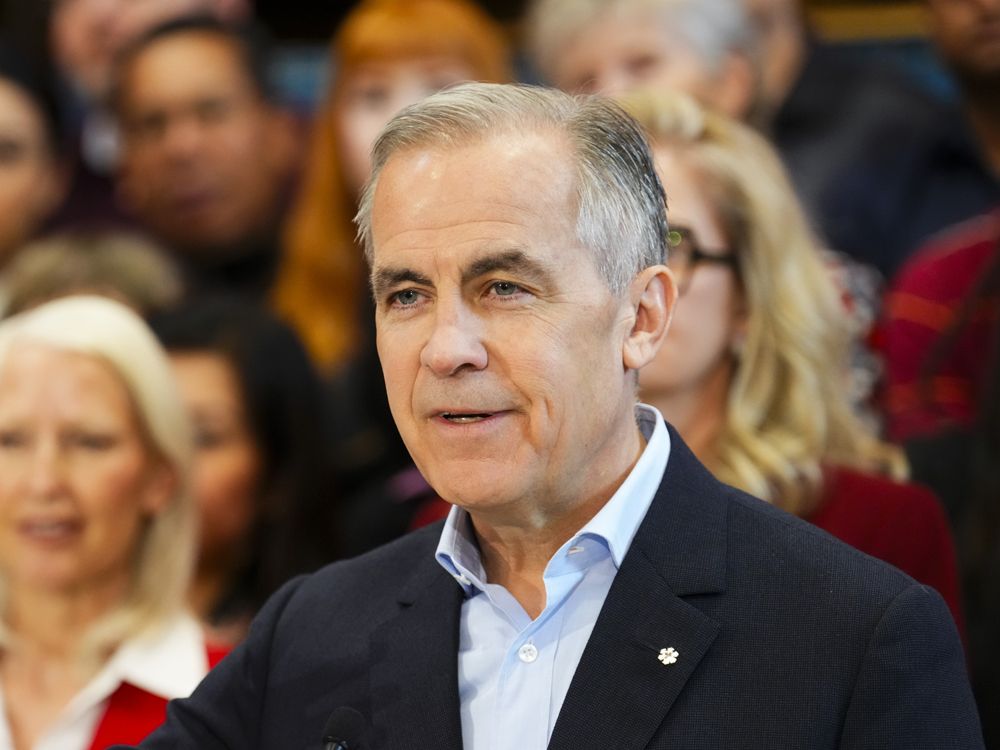This type of private investment hasn’t been allowed in Canada even though the government got out of airport ownership in the 1990s
Article content
Canada’s largest pensions have collectively invested billions of dollars in airports around the world and could ultimately do the same in Canada, says Stephen Poloz, the former Bank of Canada governor appointed to help the federal government get such funds to deploy more of their investment dollars inside the country.
Article content
Article content
“I do think there’s a path,” he said, adding he believes pension involvement in Canadian airports could start almost immediately with investments in “adjacent” assets such as parking garages and freight services as well as new developments like sustainable aviation fuel facilities that aren’t core to the business of an airport.
Advertisement 2
Article content
Under existing rules, Poloz said such standalone ancillary assets and services could be put in special purpose vehicles (SPVs), with the pension funds as “obvious” investors.
“It could be something new on a vacant piece of land,” he said. “And all they need then … is a deal for how much rent goes to the government and how much remains for the equity holders of that SPV.”
If the government agrees with Poloz’s assumptions, it could pave the way for a second phase that would require rule changes and legislation to allow direct investments in the country’s airports by pensions, replicating the type of investments large funds such as the Ontario Teachers’ Pension Plan have made in Europe and the United Kingdom.
Teachers’ in 2020 boasted it was the largest private investor in European airports, with stakes in airports in London, Bristol and Birmingham, U.K., Brussels and Copenhagen, though its stake in the latter was sold this year.
This type of private investment hasn’t been allowed in Canada even though the government got out of airport ownership in the 1990s. Since then, 21 of the country’s largest airports are in the National Airports System, a collection of local airport authorities across the country that operate as not-for-profit, non-share capital corporations. The federal government collects rent and can nominate up to two people to each airport authority’s board of directors.
Article content
Advertisement 3
Article content
Under the current structure, decades-long ground leases cover all airport lands, buildings and structures, along with certain roads and bridges that provide access to airports.
“It seems to me, we (in Canada) don’t want to control an airport to fall into private hands,” Poloz said. “Maybe that’s the original motivation.”
But after speaking to officials from every major Canadian pension fund following his appointment last spring, he concluded there is an appetite for such investments here, even if it means taking a minority position, as the institutional investors have done in some cases internationally.
“If the pension plan could own 40 or 49 per cent of an airport, they’d be just fine with that,” he said. “But they would like a seat at the table, and we’d want them at the table because they own other airports. They have expertise to offer.”
It’s not just Teachers’ — which teamed up with Alberta Investment Management Corp. (AIMCo) and Ontario Municipal Employees Retirement System (OMERS) to buy London City Airport in 2016 alongside the infrastructure investing arm of the Kuwait Investment Authority — that has demonstrated interest in investing in airports.
Advertisement 4
Article content
For example, the Caisse de dépôt et placement du Québec was part of a consortium that bid nearly $25 billion for London’s Heathrow Airport in 2006, and it continues to own a piece of the busy hub despite selling much of its stake.
The Public Sector Pension Investment Board (PSP) has also been a keen buyer of airports around the world, picking up a 40 per cent interest in Aerostar Airport Holdings LLC, which operates an international airport in San Juan, Puerto Rico, in 2017 to complement airport facilities the fund already owned in Athens and Budapest as well as Düsseldorf and Hamburg in Germany.
At the time, the Canadian government was mulling the idea of selling airports, with media reports pegging the value of Toronto’s Pearson International Airport at $5 billion, but it didn’t happen.
Now, the idea could be making its way back onto the agenda, though Poloz said this type of investment is unlikely to be possible for a while, especially with the country in the midst of an election cycle.
However, the handful of recommendations he made to the Department of Finance — including exploring changes to airport authority ground leases to encourage pension investment and development on airport lands — are still with the bureaucrats who will remain in place after the expected spring election.
Advertisement 5
Article content
“I know that most people see it as a good set of recommendations, and they should not think of it as a partisan list,” he said. “And if we did them, it would move the needle. I think anybody, any prime minister, any finance minister, would say, ‘Well, that’s a win just sitting there. I’m going to do it.’”
Some observers think the high deficits carried by multiple governments will drive that kind of thinking, but Claude Lamoureux, who pioneered pension investment in real assets such as infrastructure after becoming the inaugural chief executive of Teachers’ in the 1990s, is skeptical.
He cited Canada’s longstanding resistance to the type of investments that pension funds seek around the world for steady returns over long time horizons.
“In Canada, there are very few toll highways, bridges, water and sewer systems (available to institutional investors),” he said. “If you remember, the Champlain Bridge in Montreal was supposed to be a toll bridge; politicians made sure it was not.”
More recently, the Ontario government proposed legislation last year to ban new tolls on public highways.
Advertisement 6
Article content
“At the federal level, we have to wait for the election,” Lamoureux said. “Provincially, not many premiers have this on their agenda.”
Some observers have suggested a Conservative government in Ottawa might look more favourably on private investment in the airports than the governing Liberals.
However, one Conservative source said there is some concern that it could cost the party support from labour groups, since private funds would be more likely to look for cost cuts.
Poloz said he included labour unions in his cross-country consultations on pension investment and that they are concerned about potential job losses, but he suggested this was something to be taken into consideration when structuring a deal, rather than a dealbreaker.
“They don’t want you going in and saying, ‘Well, I’m going to cut 20 per cent of the jobs in an airport to make it more profitable,’ if they’re union jobs,” he said. “I understand that sensitivity.”
However, Poloz pointed out that pension funds have invested in many companies that have unionized employees. Moreover, many unionized workers have pension plans and every worker in the country will be entitled to benefits from the Canada Pension Plan, which they want to see invested in ways that earn more money for their retirements.
Recommended from Editorial
They may even want to see these funds invest more at home, Poloz said.
“I don’t see this as a real roadblock,” he said. “There’s a win-win underneath there.”
• Email: bshecter@postmedia.com
Bookmark our website and support our journalism: Don’t miss the business news you need to know — add financialpost.com to your bookmarks and sign up for our newsletters here.
Article content
Poloz charts path for pension funds to invest in Canadian airports
2025-02-10 15:08:33





